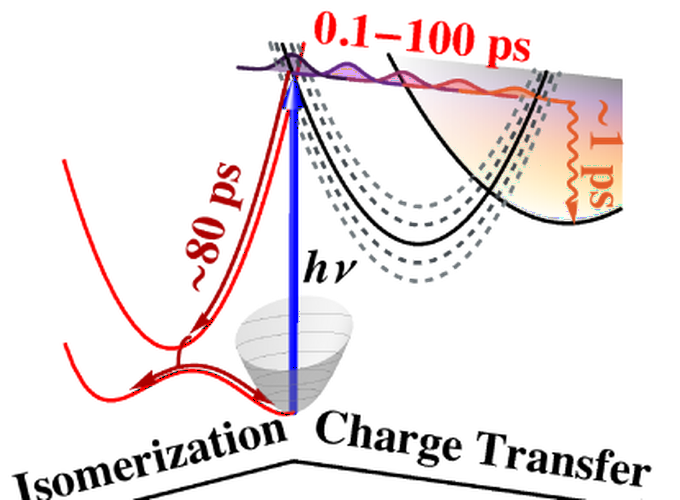

Interfacial electron transfer between sensitizers and semiconducting nanoparticles is a crucial yet poorly understood process. To address this problem, we have used transient absorption (TA) and femtosecond stimulated Raman spectroscopy (FSRS) to investigate the photoexcited dynamics of a series of triphenylamine–coumarin dye/TiO2 conjugates. The TA decay is multiexponential, spanning time scales from 100 fs to 100 ps, while the characteristic transient Raman spectrum of the radical cation decays biexponentially with a dominant ∼3 ps component. To explain these observations, we propose a model in which the decay of the TA is due to hot electrons migrating from surface trap states to the conduction band of TiO2 while the decay of the Raman signature is due to internal conversion of the dye molecule. Furthermore, the S1 Raman spectrum of TPAC3, a dye wherein a vinyl group separates the triphenylamine and coumarin moieties, is similar to the S1 Raman spectrum of trans-stilbene; we conclude that their S1 potential energy surfaces and reactivity are also similar. This correlation suggests that dyes containing vinyl linkers undergo photoisomerization that competes with electron injection.